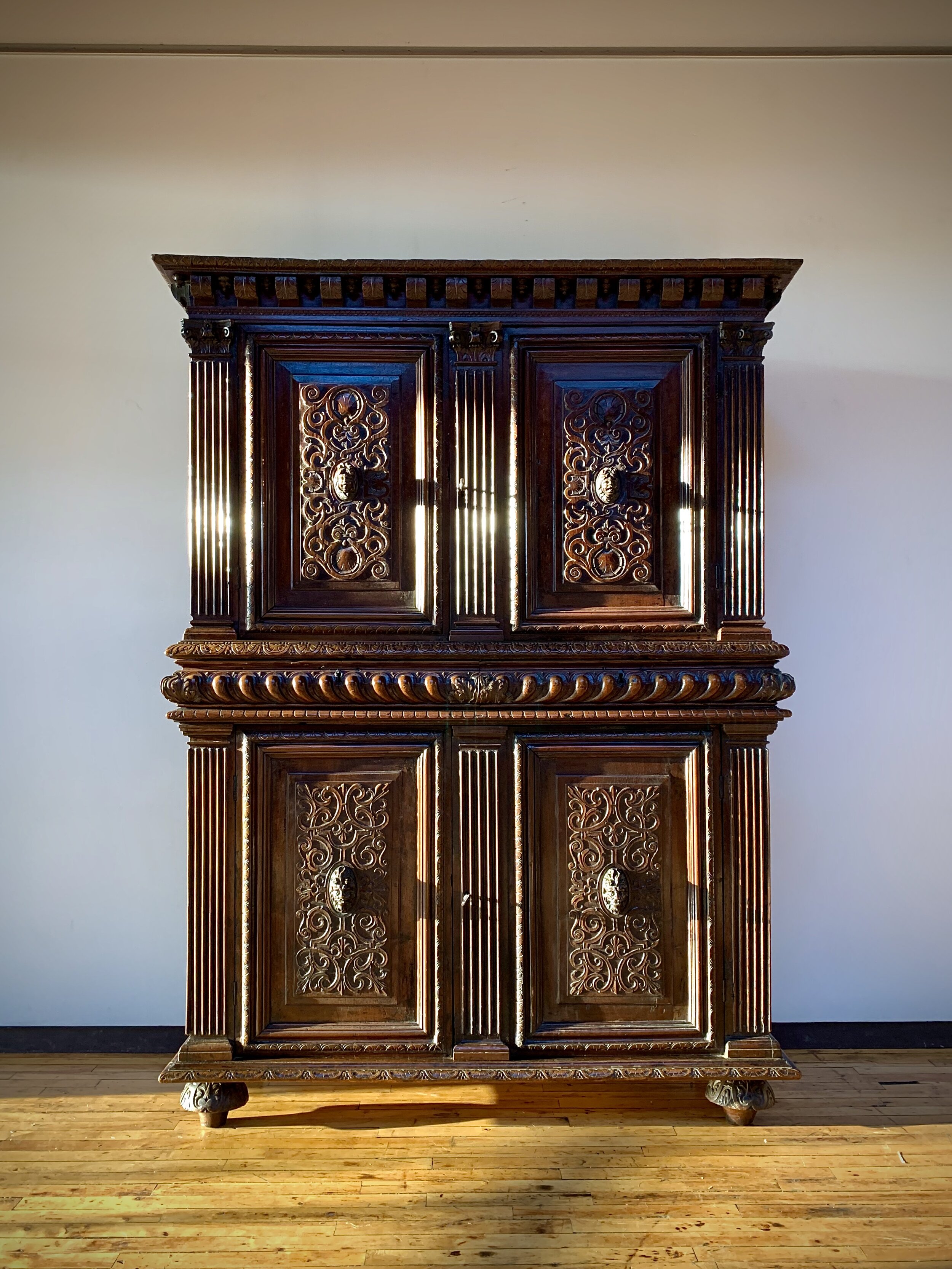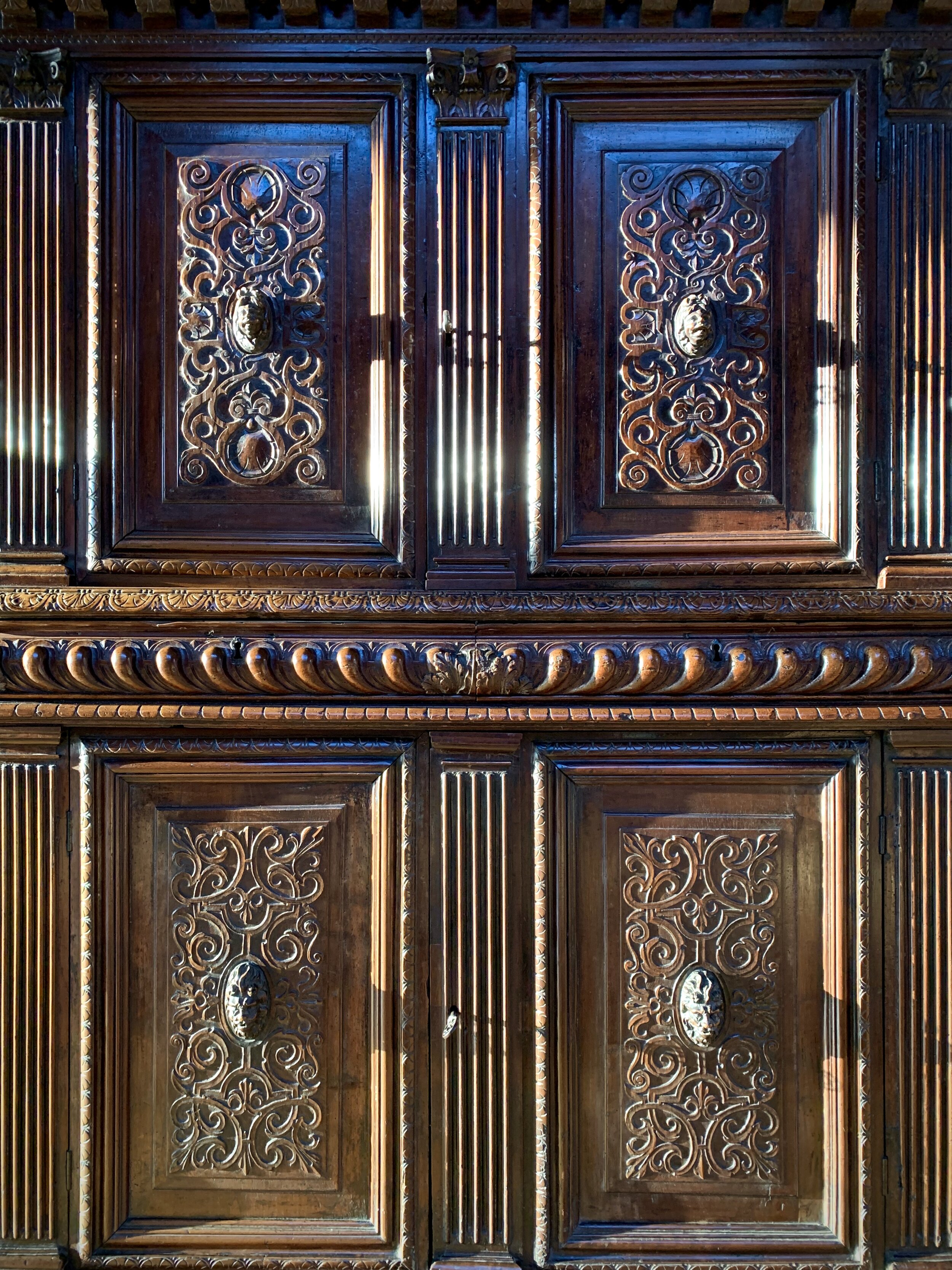(SOLD) Renaissance Period Lyonnaise Two-Tiered Buffet Circa 1550
This two-tiered buffet, or four doored armoire, is a Lyonnaise piece from the French Renaissance, dating from the middle of the 16th century circa 1550. One notes the architectural form in the style of the Fontainebleau school which King François I established to bring the art of the Italian Renaissance to France and to surpass it. The lines of the work are somewhat rigid but very rhythmic, with fluted pilasters adorned with ionic capitals and overall abundant sculpture which is not exuberant.
The decor is typical of the 16th century with tear shaped gadrooning around the center of the piece, heads of figures in high-relief on the doors which are centered on a background of interlacing foliage motifs in low-relief.
One notes the presence of fleurs de lys in the interlacing motifs around the heads sculpted into the bottom doors. These heads are perhaps those of the owners of the piece, and the fleurs de lys indicate their rank.
The quality of the work is very high, with the same level of care taken to the decor of the sides in addition to the façade. The construction, in walnut, is typical of finer pieces of the time when this wood was replacing the use of oak. The veins of the walnut are visible through the layers of patina.
Historically, this piece its mosts interesting as it is from about the earliest point in time when it is still possible to occasionally find pieces of furniture. Earlier gothic period pieces are rarer and generally of less aesthetic interest, not to mention much older than wood is able to last. This exceptional buffet dates to the apex of the city of Lyon in French History. After the 16th century, Lyon looses importance as a point of commerce between Paris and Mediterranean ports. Commerce shifts to the Atlantic ports with the focus being goods coming from the Americas during the 17th and certainly 18th centuries.
Myers & Monroe, LLC

